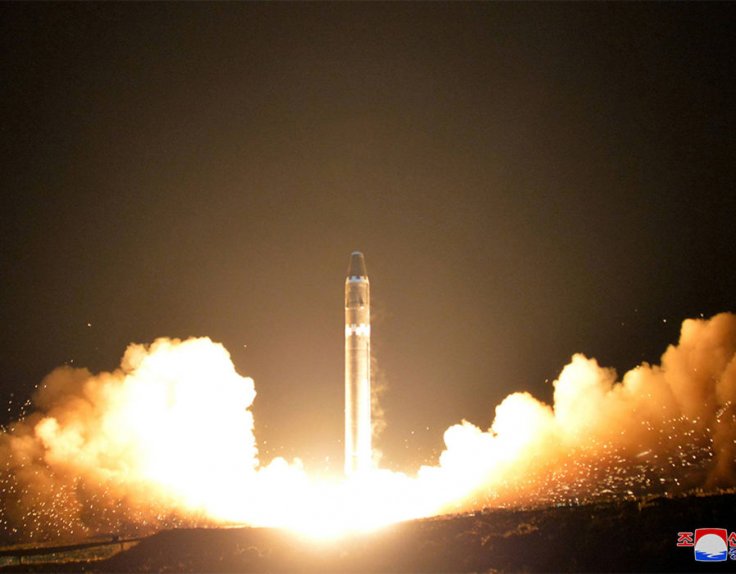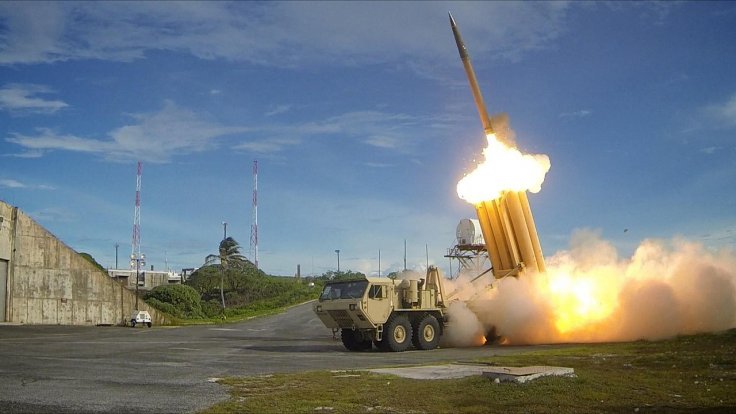Since World War II, there have been many wars involving nuclear-armed states but none has ever used the controversial weapon in a battle. However, the U.S. did draw up a plan to drop 80 nuclear weapons on North Korea if Kim Jong Un's regime were to strike first.
The plan was drawn up in 2017 when North Korea tested an intercontinental ballistic missile that flew 300 miles (500 kilometers) over Japan and splashed down into the Pacific Ocean. The Hwasong-12 missile, launched on September 15, 2017, was North Korea's longest-range (3,700km or 2300 miles) weapon that was also capable of carrying a nuclear warhead, making Japan and its ally the U.S. livid.
According to the book 'Rage' by renowned American journalist Bob Woodward, it was then the White House drew up the updated plan as Pyongyang had already threatened the U.S. on multiple occasions previously.

A few days earlier, on September 3, 2017, North Korea tested its largest nuclear weapon of around 70-280 kilotons. While the missile was not capable of reaching the U.S., it could easily destroy targets in South Korea and Japan. However, on November 28, North Korea test-fired Hwasong-15 with a theoretical range of 7,000 miles (or 13,000km) that could easily land on Washington and major European cities. That forced the White House to look at a leadership strike on Pyongyang.
"The Strategic Command in Omaha had carefully reviewed and studied OPLAN 5027 for regime change in North Korea — the U.S. response to an attack that could include the use of 80 nuclear weapons," Woodward wrote in his book based on interviews with U.S. President Donald Trump.
North Korea Crisis
During the North Korea crisis when Pyongyang tested multiple missiles and conducted nuclear tests, Kim was "totally prepared" to go to war with the U.S., Trump told Woodward in an interview for the book. Woodward asked Trump if Kim had told him directly about his preparedness to go to war and the U.S. President said, "Ah, yes, he did. And he expected to go to war. But we met."

In this period, Kim had also told the U.S. Secretary of State Mike Pompeo that North Korea was ready for a war. According to the book, Pompeo did not understand if it was a bluff or real. But Trump made his preparations as well. He delegated then-Secretary of Defense Jim Mattis to launch interceptor missiles to shoot down any North Korean missile if that was headed to the U.S.
As per the book, a communications team would follow Mattis with a geospatial map, tracking the missile's flight path. It would enable him to swiftly launch a counter strike to shoot the missile down if it was headed to South Korea, Japan or the U.S. He had alarm bells set up in the kitchen, bedroom and bathroom too in case North attacked and he would have to respond immediately.
Washington and Seoul also jointly deployed THAAD (Terminal High Altitude Area Defense) system in South Korea that was capable of intercepting medium and intermediate-range missile strikes and destroy them.

Nuclear Strike
Woodward said the U.S. attack plan — OPLAN 5027 — also included removing Kim Jong Un. But Mattis was also worried that he would have to eventually launch a nuclear strike that could kill millions. "The potential we'd have to shoot to prevent a second launch was real. No person has the right to kill a million people as far as I'm concerned, yet that's what I have to confront," Mattis told Woodward as per an interview with NPR.
In U.S. Strategic Command's (STRATCOM) OPLAN 8010, a nuclear strike option was described without taking North Korea's name. Another consideration was OPLAN 5015 that was allegedly obtained by North Korea by a cyberattack in South Korea's military servers. It included an option of a nuclear strike to take out Kim and the Pyongyang leadership.
That plan was drawn up in 2015 during Barack Obama's presidency and updated during the Trump Administration, The War Zone reported. However, the tensions eased up during the Singapore Summit in 2018 and the plan was dropped.









